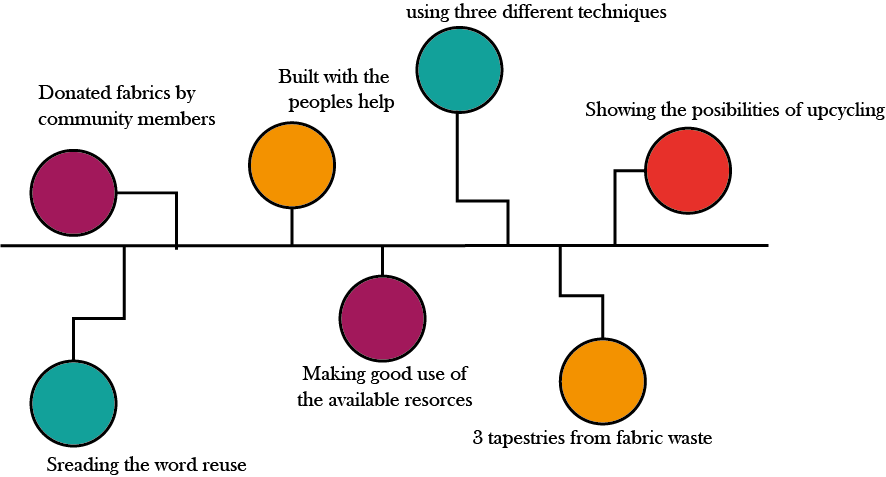The Story¶
WHAT IS ART IF IT DOSE NOT BENEFIT THE SOCITY ??¶

It is unrealistic to think that one person or one organization can solve issues related to environmental sustainability it succeed as a collective effort where everyone shares in the responsibilities
on an individual level we must do what we can to educate others and build their capacity to become positives actors in their local community to reduce the negative effects of our lifestyle on the environment
To me producing 480 tones of garment waste per day in Jordan is an aspect of our lifestyle that must be changed, not only for environmental protection but also for the economic opportunities it presents
I focused on garment in particular owing to my training at the textile academy which empowered me to rethink my understanding of fabric waste I want to pass on what I learned to others; how to make use of modern and old techniques in the reuse and upcycling of fabric waste producing new designs using design thinning methods
My first step was to select 3 location in Jordan to organize training workshops for women, I decided to start in location I have worked in before, already having needed contacts and can easily prepare needed venues for training workshops. I selected Jerash, Balqa ( Ghor area ) and Amman
My second step was to research my topic. I implemented an online survey using survey monkey to assess the awareness of Jordanians on the issue of fabric waste, I researched the characteristics of local embroidery in the different areas in Jordan. then I finally assessed the available resources in the targeted area to finalize the design of the training workshops. I wanted to design trainings based on local need, capabilities and resources available in each location, to insure participance are able to replicate the work on their own and afford to do so.
I realized that it would not be beneficial to train women in Jerash and an Ghor on laser cutting as such facility is not readily accusable to them compare to the women in Amman
Therefor emphasis in al Ghor as an agricultural area was on natural dying, while in Jerash emphasis was on traditional sewing. in Amman emphasis was on Modular Circular fashion because of the accessibility of a fab-lab
The third step was producing small scale prototypes to identify possible designs for each technique
Thee fourth step was training women to produce an art piece, one from each location, using three different techniques to empower them to upcycle fabric waste based on resources available
In the fifth step the fabric art pieces were weighed to assess the contribution of the project to fabric waste management, and possibilities for upscaling, the total wight of the produced pieces was 1.6kg over an average period of two days assuming 2-3 women per piece, although this is a negligible percentage from the total fabric waste in Jordan, yet it is a good indicator of the scale of similar projects needed to positively affect a change in how we manage this issue.
The final step was showcasing the art piece to inspire others, particularly civile society organizations to implement capacity building programs to such an end.
It should be noted that the emphasis of this project is on the process more than it is on the final product, it is a learning journey to raise awareness and build capacities on environmental protection through design thinking, showing the possibilities that no matter what resources we have and regardless to the level of education and resources available we can find ways to reuse our waste in an artistic way.